A battement degage is a battement disengaged from the floor. It is sometimes called battement tendu jete (“thrown”), battement glisse (“glided”), or simply degage (“disengaged”). Keep reading the article if you want to learn how to execute this step correctly.
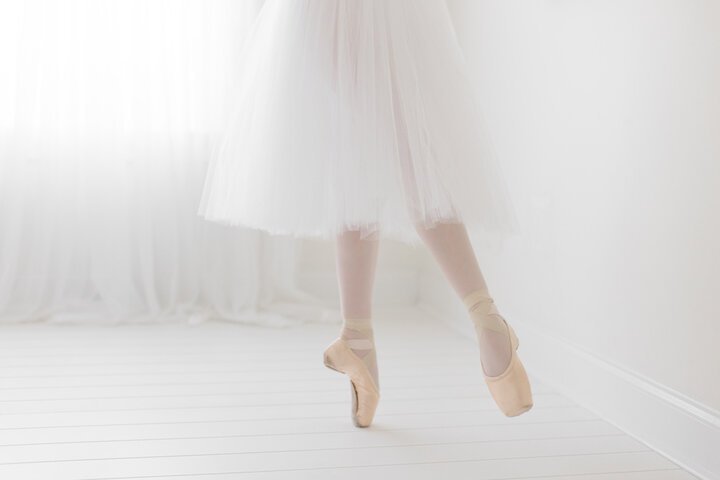
Table of Contents
Battement Tendu Degage
First of all, what is a battement? In French, this term literally means “beating.” In other words, the dancer “beats” with the working leg stretched or bent. There are different types of battement. For example, the battement tendu, the grand battement and of course, the battement degagé. In each case, the action consists of repeatedly lifting and closing one leg, or, in simpler terms, repeatedly opening and closing it.
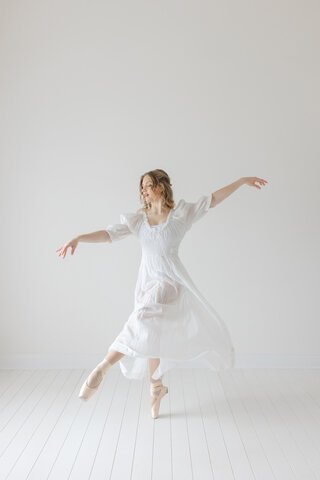
Each school gives this step a different name. Battement Tendu Degagé is a term from the Cechetti method. But in the French school, it is known as battement dégagé glissé. And in the Russian school, battement tendu jeté. The different terminologies convey different meanings. Dégagé means “disengaged”, “open” and “airy”; glissé means “gliding”; but jeté means “thrown.” On the other hand, in the Russian school, the working leg is “thrown” up to 45 degrees. However, in other schools, the working foot is slightly lifted off the ground and ends up just one inch or two in the air.

How to perform degage
Degage is the movement of a leg away from the stance foot to move forward, sideways, or backwards, sliding along the ground.
The movement begins in the same way as battement tendu. So, the advice for the correct execution of battements tendus is equally applicable for battements degages. But the action continues so that the foot is lifted off the ground a few inches, well on point, before sliding back into the closed position. The action can be described as a foot brushing outward and sliding inward. On the other hand, unlike tendu, degage is performed at twice the speed.
Learn the basic positions and movements here:
It begins in the first or fifth position, right leg in front.
1) The working foot brushes hard on the ground through the extension phase of the battement tendu and continues to a fully pointed position off the ground.
2) The foot is lifted approximately two inches off the ground, or at an angle of about 20 degrees.
3) In the return phase, slide the foot back to the closed position. The foot is brushed outward, releasing the heel, metatarsals and toes. Take care that the foot always returns completely to the fifth position and not halfway as in the third position.
Tips to execute degage perfectly
- The height at which the leg is thrown depends on the tempo of the exercise, which can vary from 45° (slower) to 25° (faster). As the leg is raised higher, the capacity for speed is lost.
- Equally important for correctly executing the step are a strong, energetic closing of the leg and a dynamic outward brushing. The accent on the battement degage is on the closing
- The working leg must be kept strictly rotated. This is the only way to properly work the inner thigh muscles. The leg must be stretched out like a violin string.
- When performing degage devant or derriere, your foot should slide in a straight line from the supporting heel. When executing this step a la seconde, your foot must slide to a point off the floor in a straight line with the supporting toe. Don’t extend your working leg diagonally forward or backwards.
- On the other hand, you must keep your torso upright, without leaning. Feel the sensation of your working leg meeting your torso, whether you are doing the degagé forward or backward.
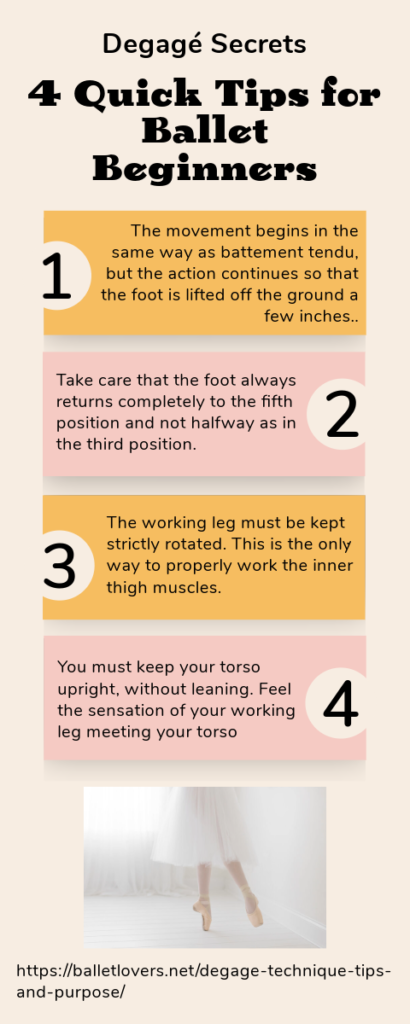
Purpose of Degage
The main function of the degage is to develop speed and lightness in the toes. Degage strengthens the toes, develops the instep and improves flexibility in the toe area. It also facilitates quick, small, sharp movements of the entire leg and foot that work in all directions.
The battement degage is the basic preparatory exercise for all petit allegro steps. So, this movement helps the arches and ankles become flexible and prepares them for quick movements in jumps. The fast opening and closing of the leg is the basis for allegro steps with beats (batterie). The degage is part of many ballet steps, such as the brushing action in a glissade.
This is why a strong, energetic closing of the leg and a dynamic brushing outwards are so important for correctly executing the step. The inner thigh strength used in closing is directly related to the strength with which the legs must be brought together in the air in assemblés, as well as in all movements using batteries.
Finally, the strength developed in pushing along the ground is vital for jumping. For example, one way to prepare for performing the assemblé is to practice degagés from the demi plie.
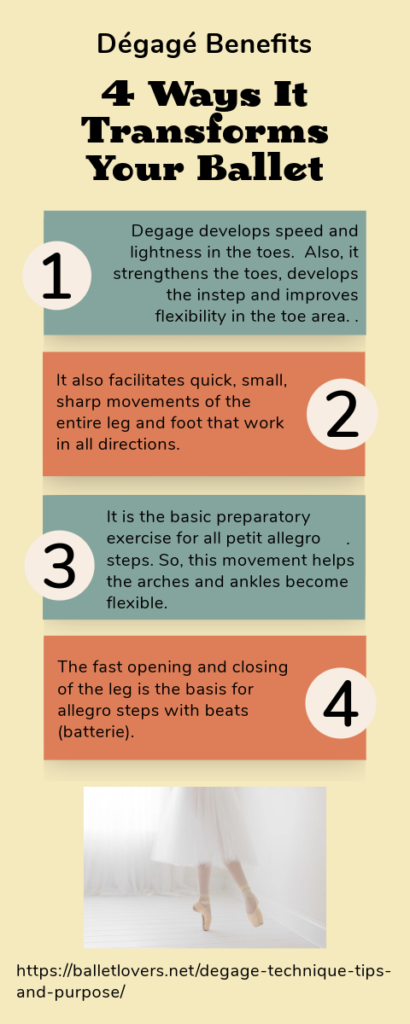





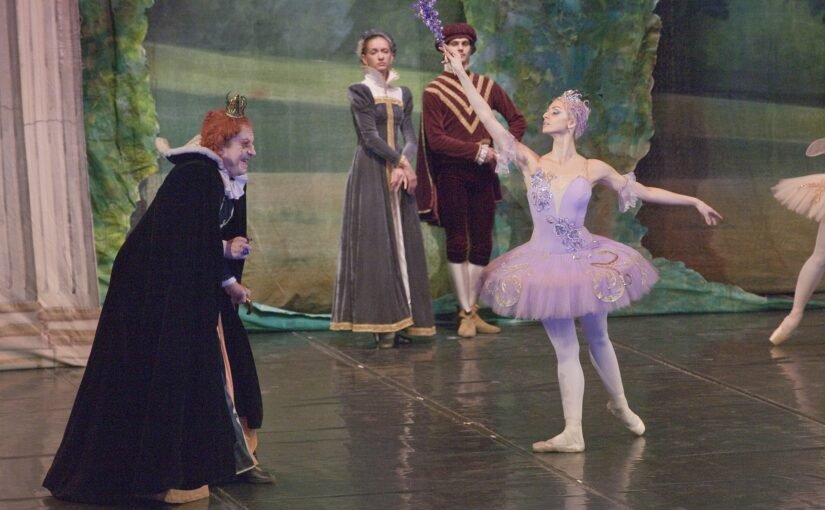

Leave a Reply